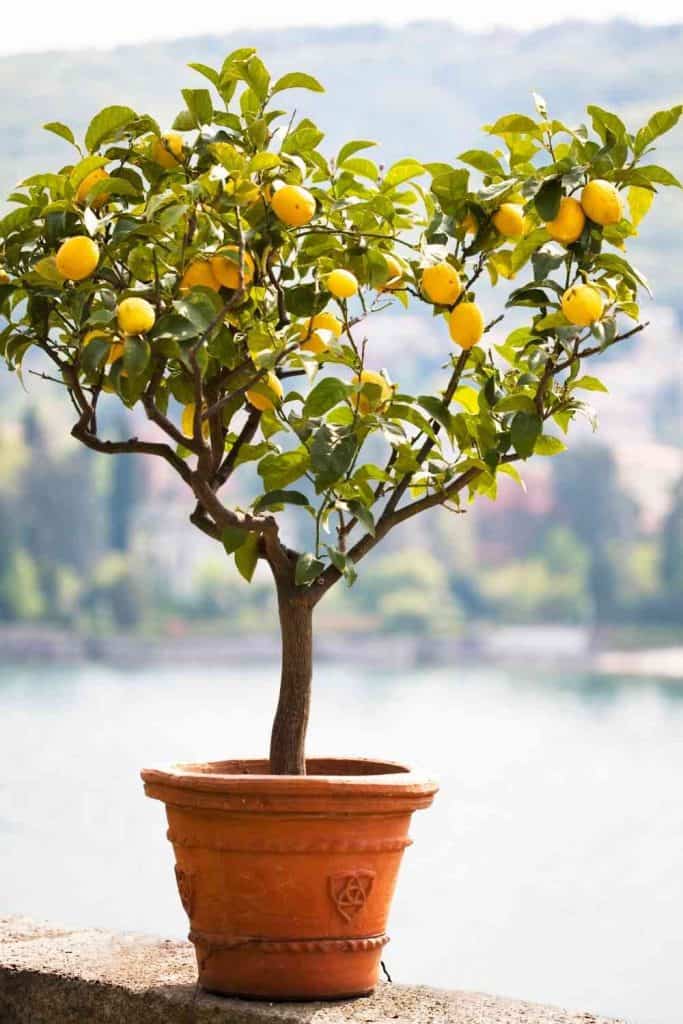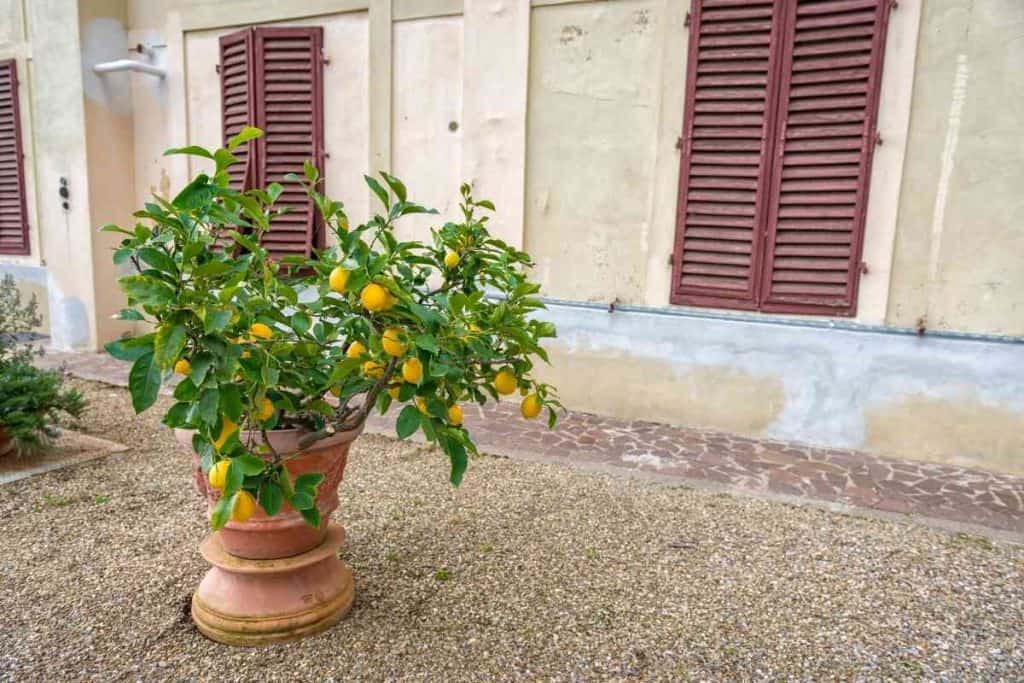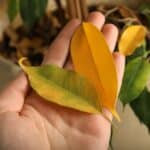You won't find anything that personifies the warm, carefree aura of spring and summer quite as citrus fruit. And lemon trees are among the top recommended for your indoor orchard because they are easy to grow and rapidly produce fruit, even in unfavorable and cooler climates.
Again, growing a lemon tree can be likened to having a small slice of the tropics just within your environment, as they offer super fresh flavor and versatility. However, no gardener will be happy to find many yellow leaves on their plants, especially when they are hoping for a bountiful harvest, thus leading us to what may be the likely cause.
Generally, lemon tree leaves turning yellow could be caused by temperatures lower than 50°F, nutrient deficit in the soil, under-watering, overwatering, and spider mite infestations.
In this article, we'd be discussing the main reasons why your lemon tree leaves are turning yellow and some possible ways to tackle the issue!
Table of Contents
What Is Lemon Tree?
A lemon tree is a little Asian evergreen tree popularly grown in warm and tropical areas with pale green glossy leaves and eatable fruits.
Meanwhile, a lemon is a product of a small evergreen tree in the flowering plant family Rutaceae and primarily originated from Asia, especially Northeast India, Northern Myanmar, and China.
Botanically called Citrus limon, the lemon fruit produces juice used as ingredients for several pastries and desserts like tarts and the traditional American lemon meringue pie. Its fruits feature typically styptic flavor, either fresh or preserved, and are also used for many poultry, fish, and vegetable dishes worldwide.
Lemonade, produced with lemon, sugar, and water, is a standard warm-weather beverage, and you can apply its juice to a tea. The lemon was considered a kind of citron (Citrus medica) by 18th-century Swedish botanist Carolus Linnaeus but was recently seen as a distinct hybrid species.
Why Is Lemon Tree Leaves Turning Yellow?

While waiting curiously for the joyous harvest of your homegrown lemon, it's disappointing to find the tree having more yellow leaves than even yellow lemons.
You'll be led to ask what is going on. We have highlighted the most common reasons lemons grow yellow leaves and possible preventive measures.
See Also: What Causes Pansy Leaves to Turn Yellow? (6 Main Causes)
1. Overwatering
In its tropical climate, lemon trees grow under warm conditions with full sun; therefore would be like it if the soil were dried out between watering. Excessive moisture around its root system could result in the yellowing of its leaves as a symptom of stress.
Therefore, you must allow the top two inches of the soil to dry out before watering again. The perfect watering schedule should be once a week with a moderate soak.
Frequent watering makes the soil steadily moist, causing the leaves to turn yellow or drop. It can also lead to root rot that kills the lemon tree.
2. Drought & Under-watering
Although lemon tree leaves mostly turn yellow due to overwatering since they like soil conditions more on the dry side, under-watering or lack of it can also turn its leaves yellow. In these cases, the leaves will appear faded and turn yellow, thus indicating a sign of drought.
There are several reasons why drought can cause lemon tree leaves to turn yellow. First, it could be that the indoor air is typically drier than outdoors as heat, air-con, and forced air sources all sap dry the moisture in the lemon tree's leaves, thereby causing them to turn yellow due to stress.
It could also be that you are under-watering, thereby making the soil surface moist yet, doesn't get to the roots, causing the leaves to turn yellow. Excessive heat and sun can also evaporate the moisture and dry out the soil more than required, thus causing yellow leaves.
3. Lack of Fertilizer or Nutrients
Lemon trees are significantly heavy feeders and grow and breed fruit bountifully if fed frequently throughout the spring and summer seasons.
Lack of feeding or nutrient deficiency causes its leaves to droop and turn yellow sometimes while maintaining its green veins with the rest of its leaf yellowing.
This process is called chlorosis. This occurs mainly in potted lemon trees since the pot does not possess enough soil capacity, and so the roots can only find minimal nutrients to feed on.
4. Low Temperatures
Since lemon trees originate and thrive under the warm conditions of the tropical areas, they hardly survive under cold winter temperatures or frost.
They are best under USDA zones 9 to 11. In lower temperature conditions, they can undergo stress, which causes their leaves to turn yellow and drop off. Whenever the tree experiences frost, it can die again.
Older lemon trees will always become cold and hardier than tender ones; therefore, a smaller lemon tree is prone to freezing, and its leaves turn yellow and drop.
5. Spider Mites
The most significant effect of spider mites is that it causes yellow spots on the leaves of your lemon trees and possibly, some leaf drops. In addition, you can see spider mites in homes with lower humidity levels and are common pests for indoor plants.
It can defoliate your lemon tree if you don't treat them as soon as possible, but luckily, it's a more effortless pest to deal with.
6. Adequate Sunlight
Since lemon trees originate from the tropical regions and are widely grown in countries like Spain and Mexico, where they thrive under full sun, you can imitate their native conditions by providing them with the right amount of sunlight.
You can grow lemon trees outside of their native environment, but you have to make sure that you cultivate them under full sun, or they will not produce flowers or fruit and will even turn their leaves to yellow and drop off as a sign of stress.
The best condition for your lemon trees is around the sunniest part of your garden to produce bountiful fruit and keep them healthy.
However, if you plan to bring them indoors, you have to provide them with more hours of sunlight and higher light intensity and hope they acclimate to the indoor conditions to avoid yellow leaves or leaf drop-off.
How to Treat Yellow Leaves on Lemon Tree

1. For Overwatering
- Make sure you grow the lemon trees in pots with suitable drainage holes in the base to allow the excess water to drain after watering.
- You must often empty the excess water on the trays placed under lemon trees to prevent the water from keeping the soil moist and prevent good drainage.
- Make sure the lemon trees are planted using well-draining soils, as they help avoid the leaves from turning yellow and dropping. The ideal soil mix should be ⅓ multi-purpose compost, ⅓ garden compost, and ⅓ horticultural grit or perlite for nutrients.
2. For Drought & Under-watering
- Take your lemon tree off draughts or heat sources, specifically in a sunny window, and mist the leaves continuously to increase the micro-climate for your tree.
- Water the lemon tree moderately at least once a week to allow drops of water out of the pot's base.
- Ensure you constantly monitor the soil moisture during heat waves to avoid drought, and if required, water the tree more often (but don't overwater) to prevent yellow leaves.
- If the tree has undergone drought, it would be best to submerge the whole pot in a basin or wheelbarrow filled with water for at least ten minutes.
3. For Lack of Fertilize or Nutrients
- Endeavor to apply an ideal citrus fertilizer once a month in the spring and summer to maintain the leaves' healthy look and produce flowers and yield fruits.
- Frequent fertilizer applications, a good watering routine, and full sun should boost the tree's appearance and help recover its drooping looks with yellow leaves in the weeks ahead.
- Be mindful of over-fertilizing, as it can result in the yellowing of lemon tree leaves. You must follow the recommended dosage of the manufacturers.
4. For Low Temperature
- Endeavor to bring lemon trees of different kinds indoors or into a heated greenhouse whenever the night temperature is not more than 50°F (10°C) and keep them close to a sunny window for protection and maintenance of their leaves.
- Ensure that when you bring them indoors and place them in a sunny window, you water them frequently and adequately mist the leaves. This will help them recover and enhance their new growth in response to more light during the spring.
5. For Spider Smite Infestations
- Misting with water is a good disincentive since they work most in dry homes, and moist foliage will help get rid of them.
- The most effective means to destroy them all is by washing your leaves with soapy water, and it will help prevent the lemon tree from getting infected.
- Then, trim back any affected leaves, and the lemon tree will regain its normalcy without many issues.
6. For Lack of Sunlight
- The perfect place for a lemon tree during the winter is a heated greenhouse since it features a steady temperature and the highest amount of natural sun, which the lemon tree needs.
- You can place them indoors close to sunny south-facing windows with good light conditions.




